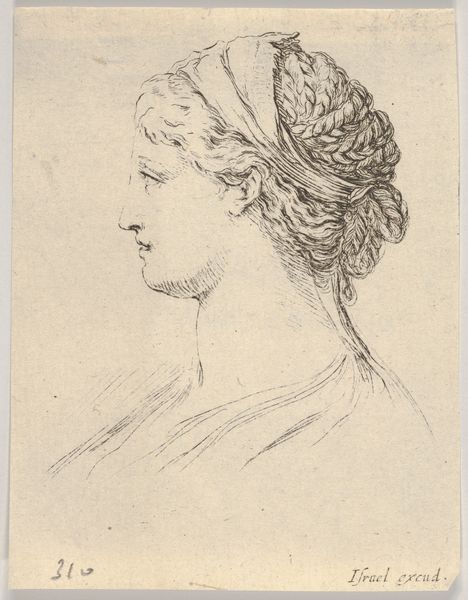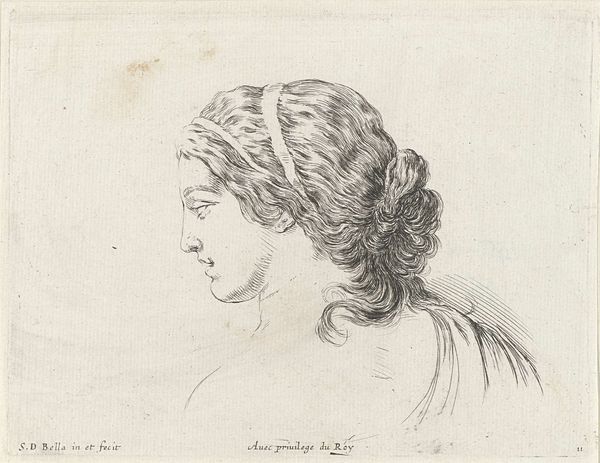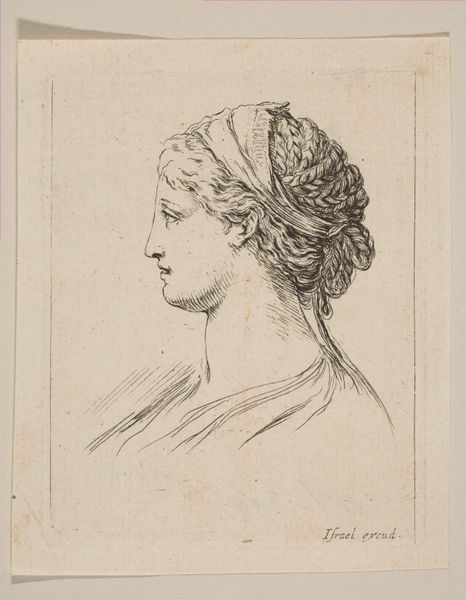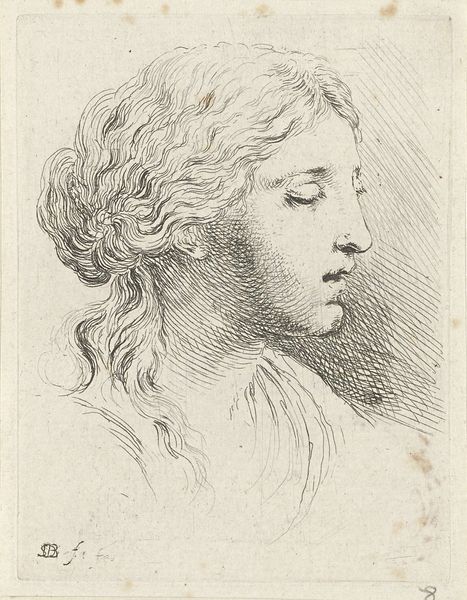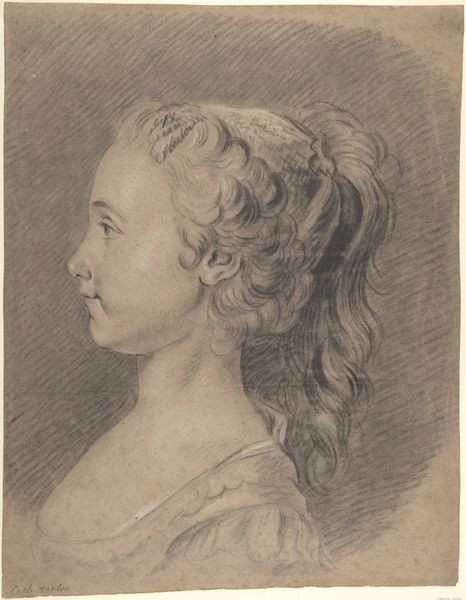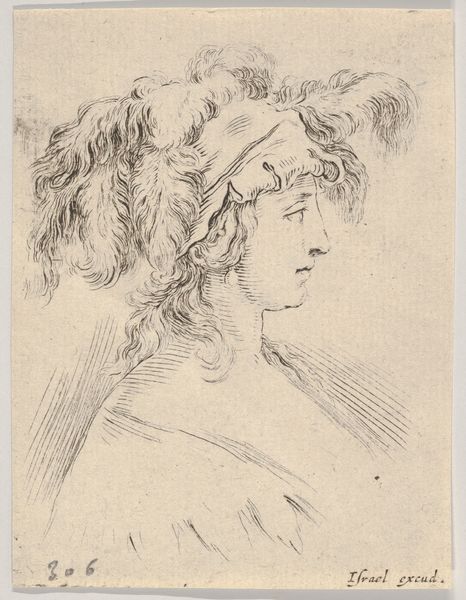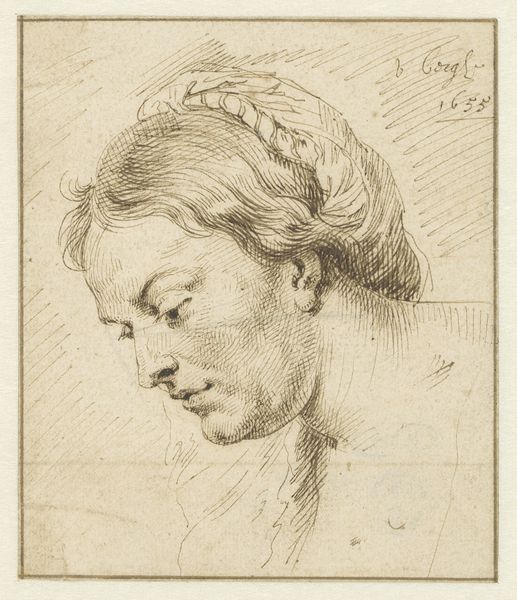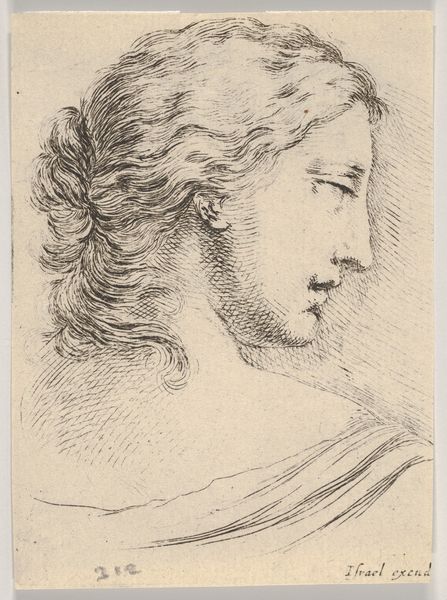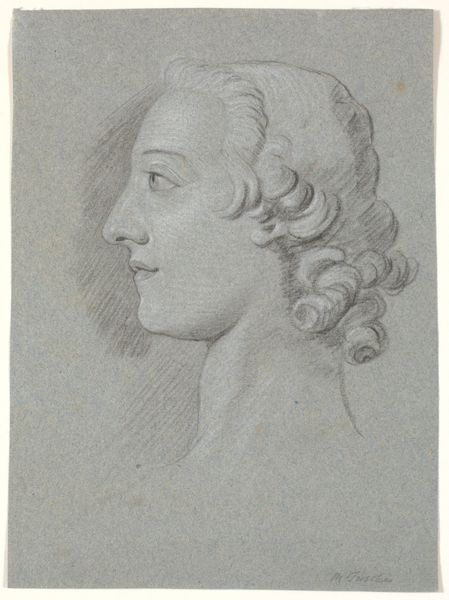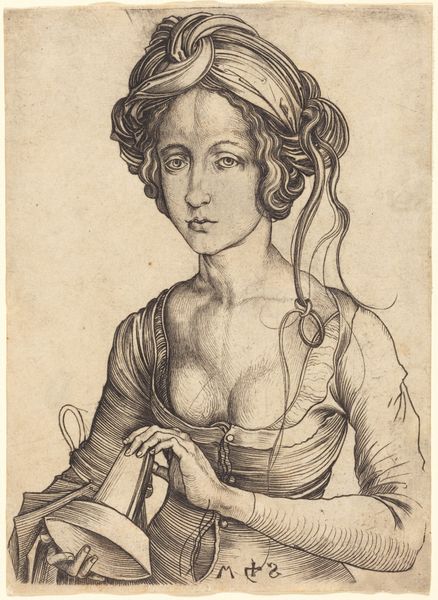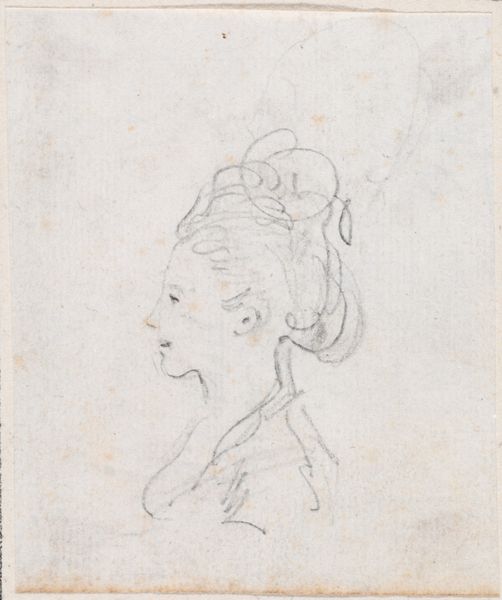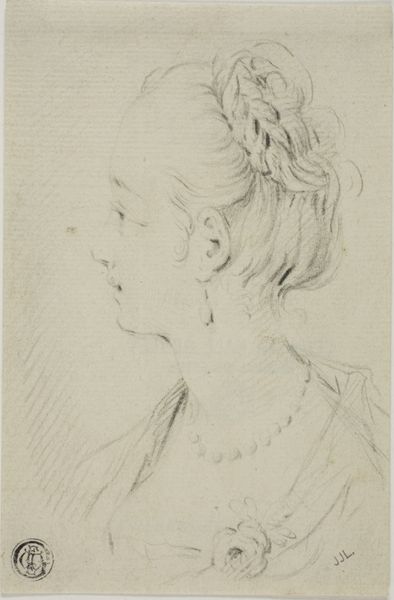
Plate 14: head of a woman, in profile, from 'The Book for Learning to Draw' (Livre pour apprendre à dessiner) 1647 - 1652
0:00
0:00
drawing, print, etching
#
portrait
#
drawing
#
baroque
#
head
# print
#
etching
#
form
#
line
#
history-painting
#
profile
Dimensions: Sheet: 3 1/4 x 2 1/2 in. (8.3 x 6.4 cm)
Copyright: Public Domain
Curator: Looking at "Plate 14: head of a woman, in profile" by Stefano della Bella, made between 1647 and 1652. It’s an etching, one of a series intended as a drawing guide, currently residing at the Metropolitan Museum. Editor: It's remarkably delicate. The lightness of touch gives her an almost ethereal quality. I see hints of classical sculptures, perhaps a muse? Curator: Exactly. Della Bella worked within the Baroque idiom but was deeply influenced by classical ideals. Profiles like this one hark back to ancient Roman portraiture, echoing a sense of timelessness. Editor: The artist really captures a very particular historical moment of cultural and artistic renewal by returning to classical forms. Is that also connected to the artwork being part of an instructional series? It's fascinating to me how visual form carries a huge legacy! Curator: Precisely. The “Book for Learning to Draw” suggests how these forms were to be understood as a visual vocabulary to be mastered. Copying classical ideals was a pedagogical tool, part of the artistic training to communicate power, authority, and ideal beauty. It embodies cultural memory. Editor: But her expression is so subtle. What’s interesting to me, from the social historical aspect, is how printmaking made these ideals accessible to a broader public. Curator: The series offered a wider audience the means to engage with these sophisticated visual motifs. Etchings circulated easily, acting almost as templates that influenced artistic tastes across social strata. They were essentially democratizing access to "high art," even if indirectly. Editor: Democratizing through repetition, interesting thought! Curator: I'm always intrigued how these seemingly simple lines carry centuries of cultural weight, shaping how we see and interpret beauty. Editor: Absolutely, and considering this work, it's really impressive how a teaching aid gained museum significance as the original artwork, documenting not only artistic skills but social transformations in art distribution and aesthetic values.
Comments
No comments
Be the first to comment and join the conversation on the ultimate creative platform.
